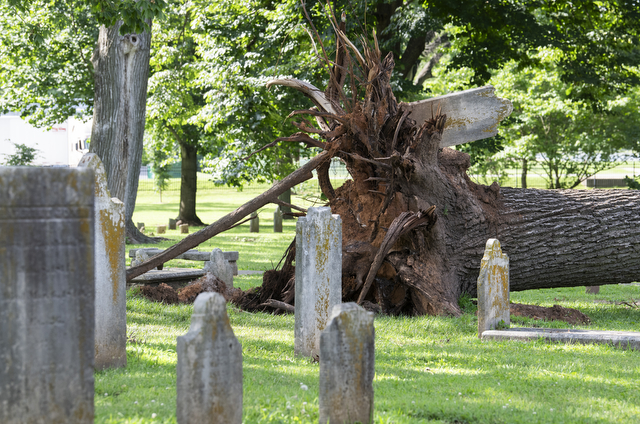Book review: ‘The Universal Ethiopian Students’ Association’
Published 12:00 am Sunday, February 9, 2020

- BOOK REVIEW
“The Universal Ethiopian Students’ Association, 1927-1948: Mobilizing Diaspora” by TaKeia N. Anthony. Palgrave/MacMillan, 2019. 129 pages, $69.99.
In the 1920s, the New Negro Movement and the Universal Negro Improvement Association were two movements that sought to promote a deeper appreciation of being black in the United States and elsewhere. At the same time, a group of black college students in New York City adopted a philosophy that blacks should support Ethiopia, the oldest independent African state. These students organized the Universal Ethiopian Students’ Club in Harlem, which was considered at the time the cultural center of black Americans. The students supported a belief in what they called Ethiopianism, which meant that persons of African descent were much like the Ethiopians. Ethiopianism was similar to pan-Africanist philosophy, which advanced the idea that all blacks wherever they resided (United States, Caribbean or Africa) should simply define themselves as African wherever they resided. This movement became more visible when the Italian armies under Mussolini invaded Ethiopia in the 1930s seeking to expand its colonial holdings in Africa.
As news of the invasions of Ethiopia grew, the small club expanded its efforts to inform blacks and others about Ethiopia’s conditions. African American-owned newspapers covered the invasions and encouraged blacks to support the Ethiopian cause. Emperor Haile Selassie of Ethiopia asked for help from diasporic blacks who were scattered around the world. Although the Universal Ethiopian Students’ Club functioned with limited resources, it continued to attract a persistent group of urban black college students and academics who did not let Ethiopia and other African issues go away or be ignored.
In the early 1930s, the club reorganized into an association to welcome new members. In 1933, the Universal Ethiopian Students’ Club changed its status to Universal Ethiopian Students’ Association (UESA) and welcomed more than just students to discuss and debate issues affecting African people worldwide.
To promote its ideas, the association started a publication to expand the discussion: The African: The Journal of African Affairs (1937-1948). The journal was devoted to seriously discussing continental African issues wherever persons of African origins lived. Its early years as an association were problematic and become even more so with the economic depression of the 1930s. It attracted members from the equally pan-Africanist Universal Negro Improvement Association after its founder Marcus Garvey was deported in 1926. After gaining members from the UNIA and those of the New Negro Movement headed by Howard University professor Alain Locke, it attracted notable individuals such as Dr. Charles S. Johnson, the first black president of Fisk University, and Dr. Willis Huggins, the first black person to earn a Ph.D. from Fordham University.
The African publication provided a printed venue to discuss alternative discussions on African history and the African struggles against European imperial rule across continental Africa. Some of the contributors were college professors at historically black institutions or predominantly white institutions. Unlike black weekly newspapers aimed at the masses, its articles on African history centered on uniting Africans regardless of where they lived. One of the early issues was what to call persons of African descent outside of Africa. Negro or colored nomenclature was not used. All blacks were considered African whether they were in the Caribbean, the United States or elsewhere. At one point, its published articles on European colonial behavior in Africa led to its suppression by the Belgian Congo’s colonial administration.
Throughout the 1930s and 1940s, the association’s expanding international and United States influence came primarily through The African publication. The author noted that at one point The African editorial direction was influenced heavily by the idea of Amy Jacques Garvey (the widow of Marcus Garvey) and others who followed Garveyite concepts of “race first.” The African also made it clear that the end of World War II did not provide immediate recovery for Ethiopia or provide help for Africans who fought the Nazi regime and its allies in France and Italy. With the help of Amy Jacques Garvey, The African instituted a “pen pal” feature of the publication which enabled its subscribers and readers to engage in cross-continental contact on African issues and culture within the publication’s pages.
By 1948, the early leaders of the association either died, moved south from New York or joined other organizations. Some of its members became prominent teachers and advocates of African history from an Afrocentric perspective. The most notable of these was Dr. John Henrik Clarke, whose teaching of African history from an African perspective became his lifelong focus. Although the organization ceased to exist by the end of 1948, the African-centered ideas its members found in The African led to serious discussions among Africans in the diaspora to challenge European defenders of colonial policies.
As for this compact treatment of the Universal Ethiopian Students’ Association, it provides general readers a valuable introduction to the UESA. As such, it reveals how a small group of African American students and others addressed worldwide African questions and problems of mutual concern. The European paradigms of colonial control in Africa continued in the post-World War II era. Many of the issues raised by the UESA and The African publication continued to be discussed throughout the remainder of the 20th century as European colonial rule in Africa came to an end. In sum, this study of the UESA is a thoughtful but measured examination of a small organization whose members’ shared ideas eventually influenced the lives of Africans worldwide.
– Reviewed by John Hardin, Western Kentucky University History Department.
Editor’s note: Anthony, a Bowling Green native, will discuss this book and sign copies at the African American Museum at 1783 Chestnut St. in Bowling Green at 6 p.m. Feb. 27.






